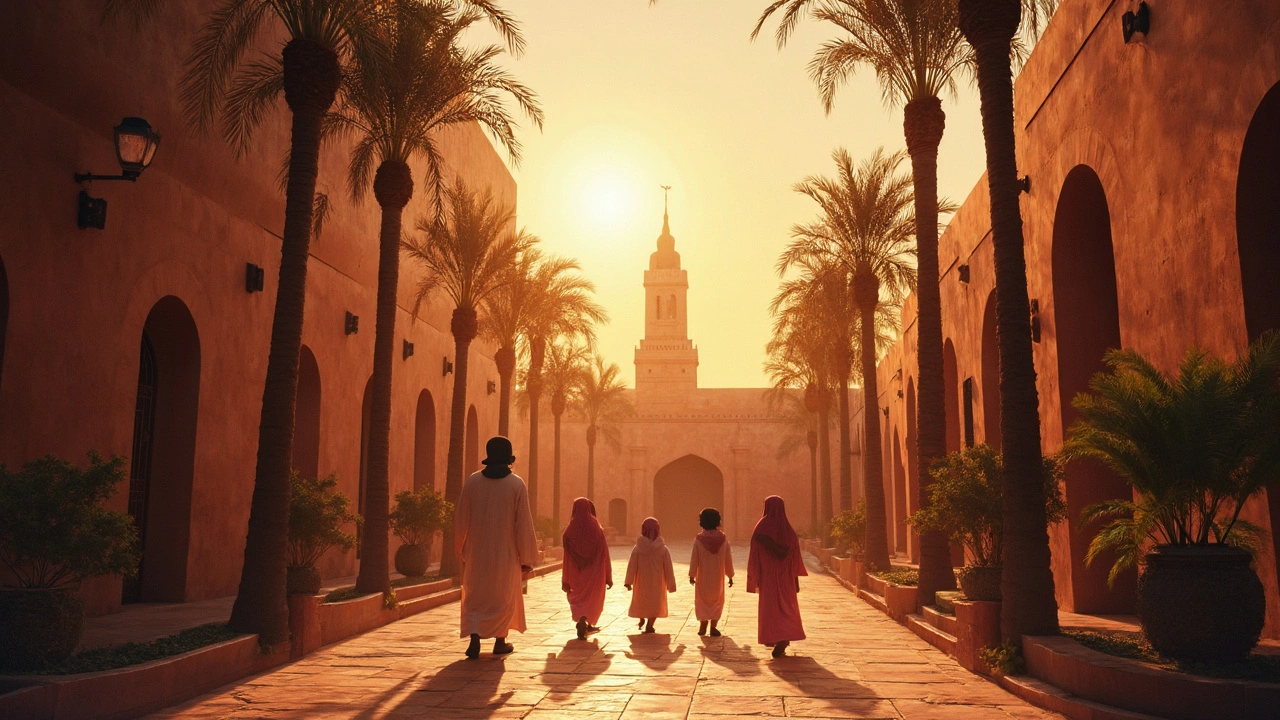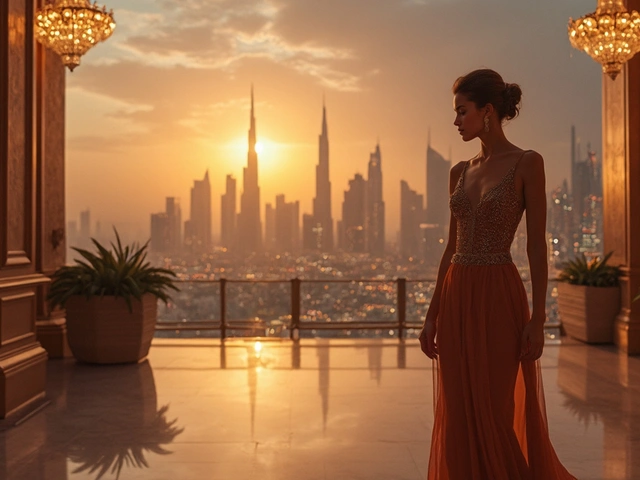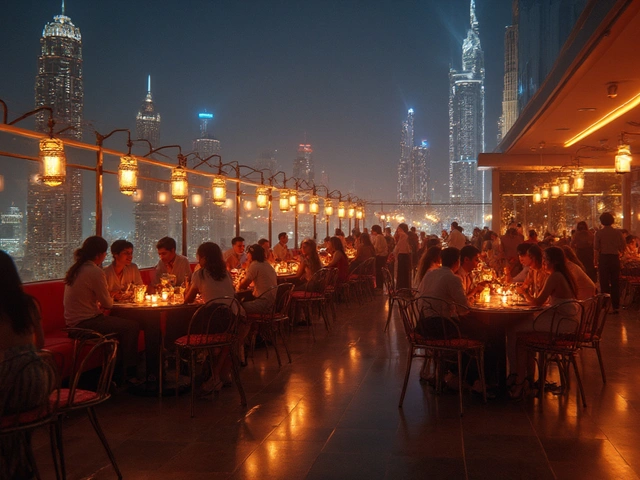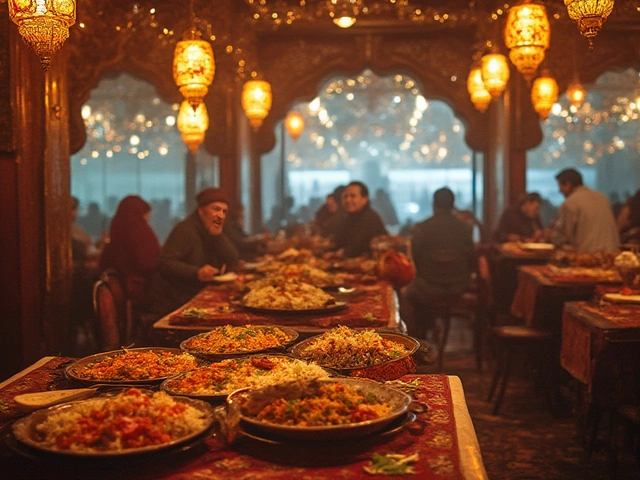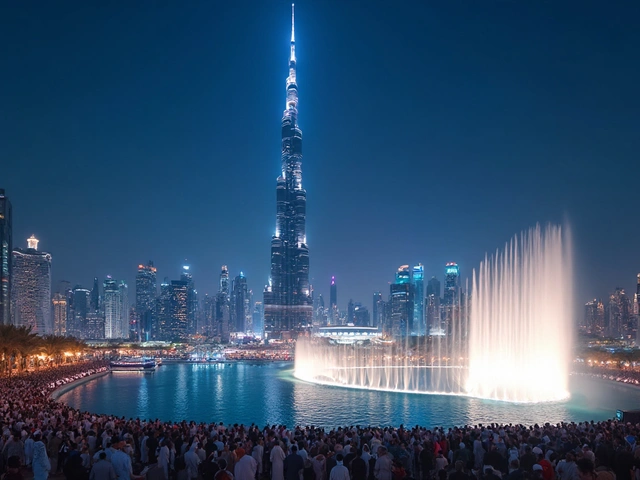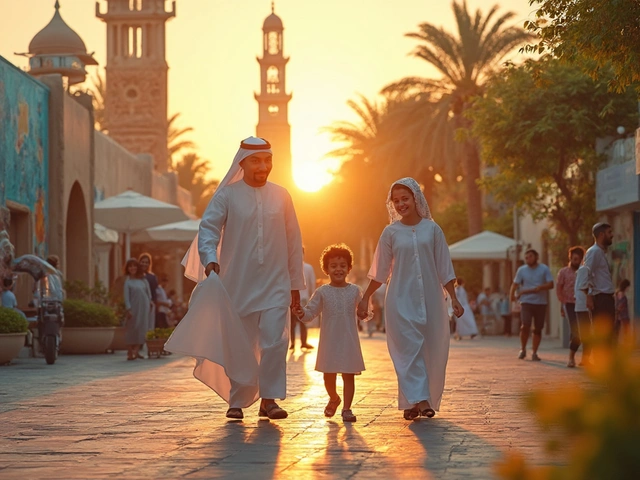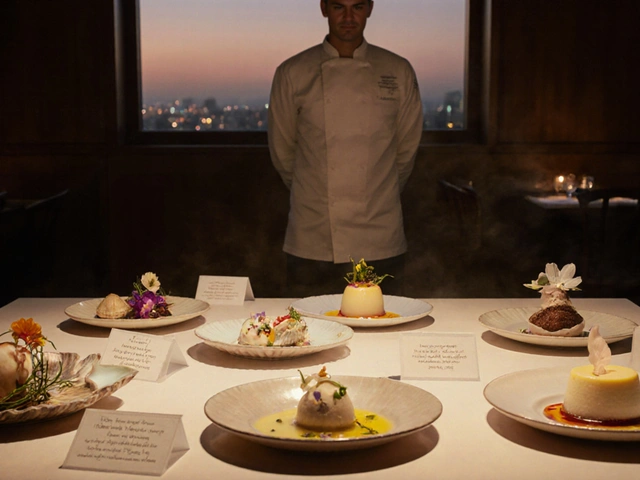Forget the usual snaps of Burj Khalifa and glitzy malls for a minute. There’s a part of Dubai’s story that barely makes it to Instagram reels or tourist brochures—those low-key sites tucked away in old neighborhoods or behind new skyscrapers. Residents and visitors in Dubai often miss out on these spots that actually shaped the city long before the world came chasing sand, sun, and shiny towers.
Ever heard of Al Fahidi Historical Neighbourhood? Sure, it’s no secret. But there’s more to this area than the main art galleries and cafes. Some tiny alleyways there still hide original wind-tower houses that have seen more than a century’s worth of Dubai’s wild growth. Between Ramadan lanterns and the scent of oud in the air, this is as real as it gets when it comes to traditional Dubai culture.
Many of these hidden gems don’t have big signboards or parking lots. You have to walk, ask around, maybe even bargain with a chai seller for a story or two. Practical tip: head down in the late afternoon when it’s cooler and the streets come alive. Traveling by Dubai Metro and getting off at Al Fahidi or Al Ghubaiba saves you the worst of the traffic jams and pricey parking hunts, too.
- Forgotten Streets and Old Souks
- Mosques, Wind-Towers, and Local Legends
- Museums Off the Beaten Path
- Preserving History in Modern Dubai
Forgotten Streets and Old Souks
If most Dubai guides sound like all roads lead to the Gold Souk, you’re only getting half the story. Slip a few blocks away from the main drag in Deira, and the city’s past starts showing up in places most folks ignore. Al Ras, one of Dubai’s oldest communities, is still home to dozens of sand-colored buildings and tiny shops selling everything from spices to odd hardware parts. For those in the know, these narrow streets offer a real, unpolished Dubai that’s miles away from the shopping malls and skyscraper scene.
The Dubai historical sites everyone skips are right under your nose in districts like Al Shindagha and Al Fahidi. Walk those winding lanes and you’ll bump into hidden prayer rooms, low arches, and, in some corners, old merchants who’ve seen Dubai flip from sleepy fishing village to global hub. It’s not rare to meet a shopkeeper in Al Ras who’s been in the same spot for 40 years. That’s the stuff you won’t find in your standard city tour.
Here’s what makes these forgotten streets and bazaars actually worth your time:
- Deira Spice Souk: Smells hit you first—saffron, cardamom, dried lemons—even if you’re not out to buy, pop by for the experience and snap some photos. Haggle. It’s expected and half the fun.
- Perfume Souk: On Sikkat Al Khail Road, these smaller shops mix and bottle oils right in front of you. Want a scent you can’t get at Dubai Mall? Here’s your chance.
- Old Textile Souk, Bur Dubai: Open every day except Friday morning, crammed with sari fabric, pashminas, and strange buttons. Perfect if you’re after custom tailoring or just want to browse quirky old shops.
Some prices (in AED), just for context:
| Item | Average Price Range (AED) |
|---|---|
| Saffron (10g) | 50-90 |
| Custom Oud Perfume (30ml) | 80-150 |
| Pashmina Shawl (Pure) | 120-350 |
Getting there is pretty easy. Use the Dubai Metro—Al Ras or Al Ghubaiba stations drop you within five minutes of the main market areas. Bring cash; not every place accepts cards, especially in the tiny side streets. Dress cool—these alleys get hot even in the cooler months. And if you want old-school, take an abra (water taxi) across the creek. They still run all day from Bur Dubai to Deira and cost only 1 AED. You get killer views and a quick photo op for your trouble.
Mosques, Wind-Towers, and Local Legends
If you think Dubai’s history starts with oil, the mosques and wind-towers in old neighborhoods will change your mind fast. These spots are living proof that Dubai was a trading port and a proper community way before skyscrapers took over. Take, for example, the Al Farooq Omar Bin Al Khattab Mosque in Al Safa—locals call it the ‘Blue Mosque’ because of its eye-catching tiles inspired by Istanbul’s Blue Mosque. Non-Muslims can even step inside during guided tours, which is rare for the region. Don’t forget a respectful dress code, by the way.
Wind-towers, or 'barajeel' as locals say, are the original version of air conditioning here. You’ll spot them in Al Shindagha and Al Fahidi. These towers catch even a tiny breeze and funnel it into homes, cooling them down in the sweltering Gulf summer. Try visiting the Sheikh Saeed Al Maktoum House. This museum was once home to Dubai’s former ruler and is packed with old photos and treasures. There’s even a corner about pearl diving, which was Dubai’s big deal before malls and gold souks.
Now, onto the legends. Older Emiratis love to talk about the ‘folk stories’ that give these places a unique vibe. Like the tale of the ‘lantern man’ who was said to guide lost boats back to the Creek using nothing but a homemade lantern and sharp eyes. Or the stories about finding old coins and pearls in the mud flats near Deira after heavy rain—some say there are still a few left if you know where to look (just don’t count on retiring off your “findings”).
| Site | Location | Unique Feature |
|---|---|---|
| Al Farooq Mosque | Al Safa | Blue Ottoman-style tiles, public tours |
| Wind-tower Houses | Al Fahidi & Al Shindagha | Traditional cooling architecture |
| Sheikh Saeed Al Maktoum House | Al Shindagha | Museum, photos, old Dubai treasures |
Quick tip: Fridays are best to explore these Dubai historical sites, especially in the morning before it gets busy. Most places are family-friendly but double-check prayer timings for mosques—the area gets quiet during midday prayers, so plan your walking tour with that in mind. You’ll take home more than just snapshots; you’ll get stories nobody else hears.
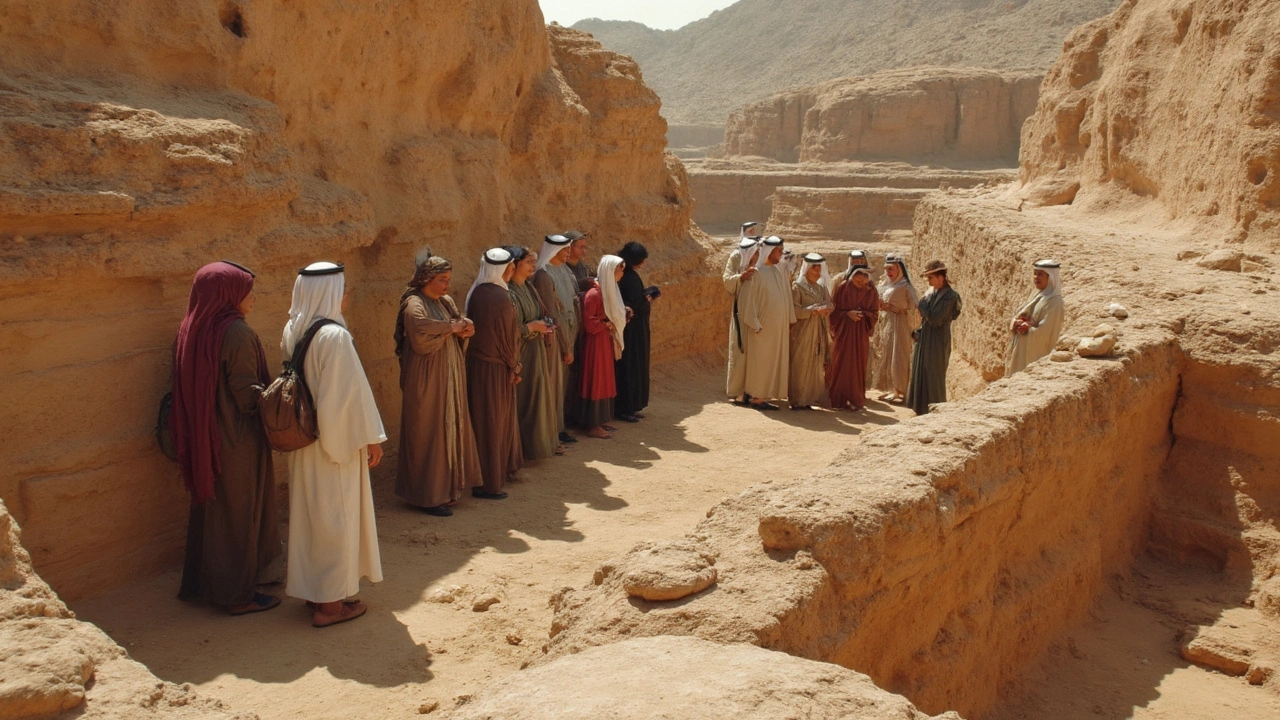
Museums Off the Beaten Path
Most folks heading to Dubai Museum at Al Fahidi Fort end up in a crowd. If you want to ditch the crowds, there are smaller, lesser-known museums that dig even deeper into Dubai’s past—and they’re much friendlier to your schedule. Here are real places you’ll want to put on your weekend list.
First up is the Etihad Museum in Jumeirah. Not exactly hidden, but still flying under the radar for a lot of locals and expats. This place lays out the story of the UAE’s formation—real documents, old photos, and personal stories from the rulers who signed the Union Agreement. You get a glimpse of the country before the skyscrapers took over. The interactive displays work great if you have kids, or if you just want to see the UAE’s story through more than old black-and-whites.
If you love anything to do with the sea or Dubai’s trading roots, the Dubai Coffee Museum in Al Fahidi is a gem. This place has everything from centuries-old coffee pots to stories about Dubai’s role in global coffee culture. It’s the only museum in the UAE dedicated just to coffee. You can taste beans from different countries, and there’s a little shop inside for brewing gadgets and freshly ground beans. Big bonus: The staff are always up to chat about how coffee runs through Dubai’s history, right from the dhow days.
The Coin Museum is another spot most people miss, even though it’s right in Al Fahidi. Inside, you’ll see coins from the old Islamic caliphates up to those minted recently in the UAE. The best part? Entry is free and it rarely gets packed. If you’re interested in seeing the physical evidence of Dubai’s old role as a trading hotspot, this is your place.
Here’s a snapshot of what these museums offer visitors:
| Museum | Location | Main Focus | Entry Fee |
|---|---|---|---|
| Etihad Museum | Jumeirah 1 | UAE’s union history | 25 AED |
| Dubai Coffee Museum | Al Fahidi | Coffee culture & history | Free |
| Coin Museum | Al Fahidi | Ancient to modern coins | Free |
If you’re going to these Dubai historical sites, plan for weekday mornings to avoid school groups and enjoy some quiet. Take along some cash, as smaller spots sometimes don’t take cards for souvenirs or snacks. Most of these museums are within walking distance of each other, so you can cover a lot in just a few hours. It’s a much more laid-back way to experience Dubai’s history than the usual tourist trail.
- Use the Dubai Metro to Al Fahidi or Al Ghubaiba Stations for cheap, hassle-free transport.
- Bring a refillable water bottle—the old neighborhoods have shaded areas but can get hot even outside of summer.
- Don’t hesitate to ask staff or locals for lesser-known facts; many guides have personal stories and great tips.
Preserving History in Modern Dubai
Keeping Dubai's past alive isn’t just about patching up old walls. It takes effort from the government, heritage groups, and even regular folks who care about more than the shiny new stuff. The Dubai Municipality and the Dubai Culture & Arts Authority take lead here, with projects that restore and protect spots like Al Shindagha Museum and the former homes of historic families. They’ve spent over AED 400 million since 2015 on restoration efforts—talk about putting your money where your history is.
If you're here in Dubai, you’ll notice places like the Dubai historical sites in Al Fahidi are getting a facelift, but the vibe stays old-school. Techniques matter: Local artisans use coral stone, gypsum, and teak wood—just like builders did decades ago. Restorers are careful to avoid fancy substitutions, keeping even minor details, like wooden mashrabiya windows and hand-carved doors, as close to the originals as possible.
Preserving history in Dubai actually involves heaps of daily work. Here’s what’s being done around the city:
- Historic building registration: Every building over 40 years old gets tracked by the government so it can’t be bulldozed for new towers overnight.
- School outreach: Programmes run in partnership with GEMS and local public schools teach kids about Emirati tradition, encouraging field trips to heritage sites instead of just lectures.
- Annual events: Events like Sikka Art Fair and the National Day Heritage Festival bring extra crowds and support to old neighborhoods, keeping these places relevant.
- Tech upgrades: QR codes on restored buildings pull up videos and maps on your phone, so even random wanderers catch the significance.
Want a snapshot of how much Dubai is putting into its history? Have a look at this quick breakdown:
| Year | Heritage Sites Restored | Investment (AED Million) |
|---|---|---|
| 2018 | 32 | 60 |
| 2020 | 54 | 90 |
| 2023 | 67 | 120 |
Looking for a way to support? Instead of just visiting the usual suspects, check out the community-led tours, buy from local souq stalls, or volunteer for city clean-up days run through Dubai Municipality’s online platform. It's worth it—preserving these pieces of old Dubai gives everyone a richer, fuller look at the city.

